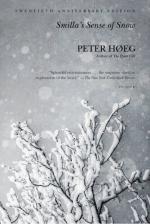|
This section contains 3,715 words (approx. 10 pages at 400 words per page) |

|
It would seem that Høeg has been compelled to create not only a character but also a narrative that is, at the very least, illuminated by a theory of mourning, possibly even driven by it. The child Isaiah, Greenlandic, gynandrous, mysteriously gone, is the perfect spark to ignite Smilla's memories both of her mother and of herself as a child, her memories of attachment and, in the same breath, loss, and thus to initiate the search, never completed, to find the mother never truly mourned. At the same time, the very structure of the narrative loosely resembles the four phases of mourning isolated by Bowlby: "numbing," "yearning and searching," "disorganization and despair," and "a greater or lesser degree of reorganization." Smilla seems to be in a phase of numbness as the novel begins, manifest in her rabid self-reliance, her fear of attachment (with, of course...
|
This section contains 3,715 words (approx. 10 pages at 400 words per page) |

|




